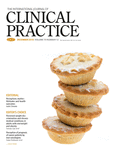Degree of dyspnoea in patients with non-ST-elevation acute coronary syndrome: A report from Japanese multicenter registry
Summary
Background
Degree of dyspnoea is almost universally evaluated in the patients presenting with acute coronary syndrome (ACS), but its clinical implications has not been thoroughly investigated. We aimed to describe the relationship between the severity of dyspnoea and in-hospital outcomes in patients with non-ST elevation ACS (NSTE-ACS) complicated with acute heart failure (AHF).
Methods
Between 2009 and 2014, 3287 consecutive patients with NSTE-ACS were enrolled in the Japanese prospective multicenter PCI registry. Patients complicated with AHF were subclassified based on the self-reported dyspnoea severity: no dyspnoeic symptoms, dyspnoea during moderate activity, mild activity or at rest. The recorded outcomes included in-hospital death, major cardiovascular (ie, cardiac death, shock, stroke or major bleeding) and renal events (ie, contrast-induced acute kidney injury [CI-AKI] or AKI requiring dialysis).
Results
In total, 441 (13.4%) patients had AHF upon presentation, including 76 (17.2%) with dyspnoea during moderate activity, 160 (36.3%) with dyspnoea during mild activity, and 205 (46.5%) with dyspnoea at rest. In-hospital mortality as well as major cardiovascular and renal events increased as dyspnoea severity worsened. After multivariate adjustment, dyspnoea at rest was strongly associated with in-hospital mortality (odds ratio [OR] 5.79; 95% confidence interval [CI], 2.56-13.11; P<.001) as well as major cardiovascular (OR, 2.55; 95% CI, 1.46-4.48; P<.001) and renal events (OR, 3.32; 95% CI, 2.05-5.38; P<.001), when compared to the patients without dyspnoea.
Conclusions
Among NSTE-ACS patients complicated with AHF, both cardiovascular and renal event rates were associated with presence of dyspnoea, and its incidence increased in parallel with dyspnoea severity.




